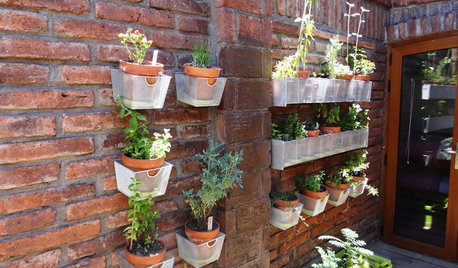Soil prep for potatoes -- Martin's method
railroadrabbit
17 years ago
Related Stories

FALL GARDENING5 Ways to Put Fall Leaves to Work in Your Garden
Improve your soil and yard the organic way with a valuable garden booster that grows on trees
Full Story
FARM YOUR YARD6 Things to Know Before You Start Growing Your Own Food
It takes time and practice, but growing edibles in the suburbs or city is possible with smart prep and patience
Full Story
GARDENING GUIDESLush, Foodie Abundance in a Small Urban Garden
This modest backyard garden provides its owner with fruit and vegetables all year round, thanks to an innovative low-maintenance approach
Full Story
FARM YOUR YARDHow to Grow Vegetables in Containers
Get glorious vegetables and fruits on your patio with a pro’s guidance — including his personal recipe for potting mix
Full Story
MOST POPULARHow to Start a Cool-Season Vegetable Garden
Late summer and late winter are good times to plan and plant cool-season crops like salad greens, spinach, beets, carrots and peas
Full Story
HOUSEKEEPINGDishwasher vs. Hand-Washing Debate Finally Solved — Sort Of
Readers in 8 countries weigh in on whether an appliance saves time, water and sanity or if washing by hand is the only saving grace
Full Story
GARDENING GUIDES10 Easy Edibles for First-Time Gardeners
Focus on these beginner-friendly vegetables, herbs, beans and salad greens to start a home farm with little fuss
Full Story
EDIBLE GARDENSHouzz Call: Where Are the Craziest Places You Grow Edibles?
Basil in a bathtub, spinach stacked up a wall ... If your edibles occupy an odd spot, we’d like to know
Full Story
KITCHEN PANTRIES80 Pretty and Practical Kitchen Pantries
This collection of kitchen pantries covers a wide range of sizes, styles and budgets
Full Story
LANDSCAPE DESIGNIs It Time to Consider Fake Grass?
With more realistic-looking options than ever, synthetic turf can be a boon. Find the benefits and an installation how-to here
Full StoryMore Discussions







paquebot
paquebot
Related Professionals
Londonderry Landscape Architects & Landscape Designers · Grand Haven Landscape Architects & Landscape Designers · New Mexico Landscape Architects & Landscape Designers · Owings Mills Landscape Architects & Landscape Designers · Saint Charles Landscape Architects & Landscape Designers · Saint Louis Park Landscape Architects & Landscape Designers · Anderson Landscape Contractors · Bethlehem Landscape Contractors · Lexington Landscape Contractors · Wareham Landscape Contractors · Hawaiian Gardens Landscape Contractors · Chicago Decks, Patios & Outdoor Enclosures · Mebane Decks, Patios & Outdoor Enclosures · Provo Decks, Patios & Outdoor Enclosures · South Miami Heights Decks, Patios & Outdoor Enclosuresfranktank232
paquebot
Flex Design LLC
alphonse